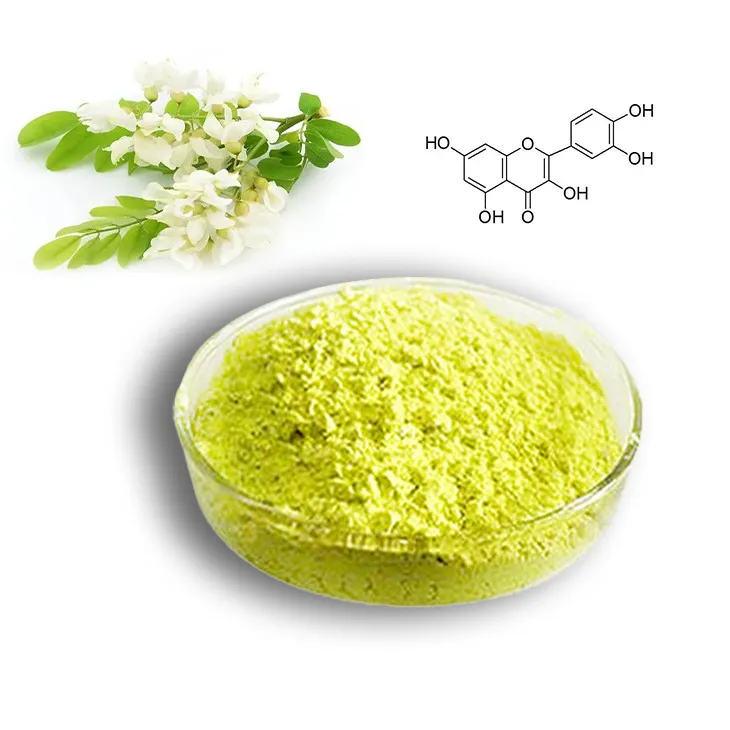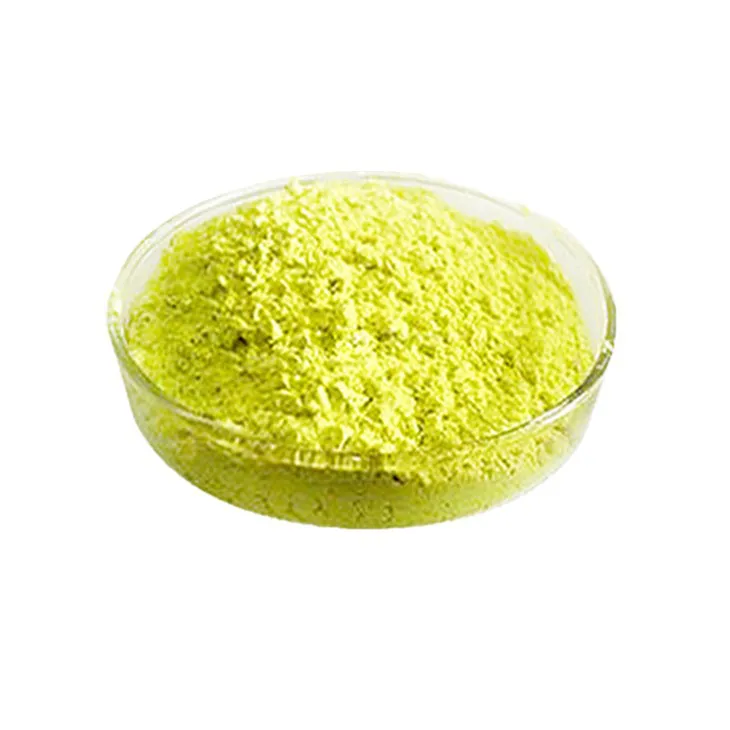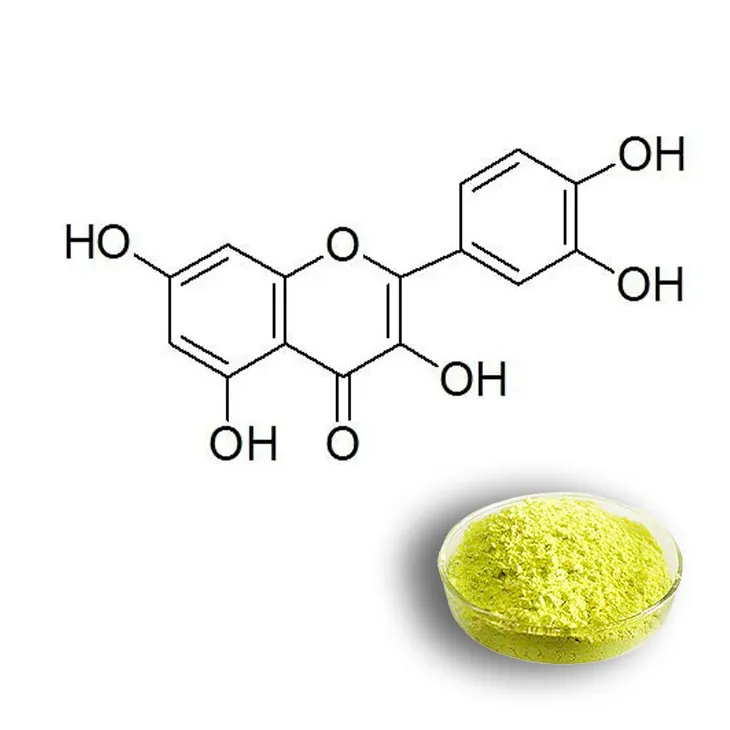- 0086-571-85302990
- sales@greenskybio.com
Quercetin: China vs. the United States.
2024-11-26

1. Introduction
Quercetin is a flavonoid compound that has attracted significant attention in the fields of health and medicine. It is found in various plants and has been associated with a range of potential health benefits. China and the United States, two major players in the global health research and application arena, have different approaches towards Quercetin. This article aims to compare and contrast the situations regarding Quercetin in these two countries.

2. Quercetin in China
2.1. Traditional Medical Heritage
China has a long - standing and rich traditional medical heritage. In traditional Chinese medicine (TCM), many plants rich in quercetin have been used for centuries. For example, herbs like Ginkgo biloba, which contains quercetin among other bioactive compounds, has been used in TCM formulations. TCM views health as a holistic concept, and these quercetin - rich plants are often used to balance the body's energy, known as "Qi", and maintain overall well - being.
2.2. Incorporation into Health - care Regimens
In modern China, there is a growing trend of incorporating quercetin - rich plants into health - care regimens. With the increasing awareness of natural health products, consumers are turning to these traditional resources.
- One aspect is the use of herbal teas. For instance, some herbal teas made from quercetin - containing plants are popular for their potential antioxidant and anti - inflammatory properties.
- Another area is dietary supplements. Some companies in China are starting to develop and market products containing quercetin extracts, aiming at promoting health and preventing chronic diseases.
2.3. Holistic View of Health Benefits
China's approach to quercetin is often influenced by the holistic view of TCM. Instead of focusing solely on specific diseases, the emphasis is on maintaining the body's balance and preventing the onset of diseases. Quercetin is seen as part of a comprehensive strategy for health maintenance. For example, it is believed that quercetin - rich plants can help improve digestion, enhance the immune system, and even contribute to mental well - being. This holistic view also takes into account lifestyle factors such as diet, exercise, and stress management in relation to the effectiveness of quercetin.

3. Quercetin in the United States
3.1. High - tech Research Focus
The United States is at the forefront of scientific investigations regarding quercetin. American researchers use high - tech research methods such as advanced molecular biology techniques and sophisticated laboratory equipment.
- For example, in studying the role of quercetin in cardiovascular diseases, they use techniques like gene expression analysis to understand how quercetin affects genes related to heart health. This allows for a more in - depth understanding of the molecular mechanisms underlying its potential benefits.
- In the field of neurodegenerative disorders, researchers in the US are using imaging techniques and cell culture models to study how quercetin interacts with neurons and affects cell signaling pathways associated with diseases like Alzheimer's and Parkinson's.
3.2. Research on Molecular Mechanisms
The focus on molecular mechanisms is a key characteristic of the US approach to quercetin research.
- Researchers are exploring how quercetin modulates cell signaling pathways. For instance, it has been found to interact with certain receptors on cells, which can then trigger a cascade of intracellular events that may be beneficial in disease prevention or treatment.
- Another area of research is related to quercetin's antioxidant properties at the molecular level. Scientists are investigating how it scavenges free radicals and protects cells from oxidative damage, which is crucial in understanding its potential role in various diseases.
3.3. Clinical Trials and Evidence - based Medicine
In the United States, there is a strong emphasis on conducting clinical trials to evaluate the effectiveness of quercetin.
- These clinical trials follow strict protocols and are designed to provide evidence - based data on whether quercetin can actually prevent or treat specific diseases. For example, in trials related to cancer, researchers are looking at whether quercetin can enhance the effectiveness of chemotherapy or act as a preventive agent.
- The results of these clinical trials are then used to inform medical practice and regulatory decisions. If sufficient evidence is found, it may lead to the approval of quercetin - based therapies or the recommendation of quercetin supplementation in certain patient populations.

4. Comparison and Contrast
4.1. Research Approaches
- In China, the research on quercetin is often influenced by traditional medical knowledge. It starts from the long - established use of quercetin - rich plants in TCM and then explores their modern applications. In contrast, the US research is more based on modern scientific principles, starting from basic molecular research and gradually moving towards clinical applications.
- China's research may be more exploratory in nature, looking at a wide range of potential health benefits from a holistic perspective. The US research, on the other hand, is more targeted, focusing on specific diseases and molecular mechanisms.
4.2. Applications in Health - care
- In China, the application of quercetin in health - care is more centered around traditional forms such as herbal teas and dietary supplements. In the US, if quercetin - based therapies are proven effective through clinical trials, they may be more likely to be integrated into mainstream medical treatment regimens.
- China's approach to quercetin in health - care is also more consumer - driven, with consumers choosing quercetin - rich products based on general health - promoting claims. In the US, the medical community plays a more significant role in determining the use of quercetin - based products through evidence - based medicine.
4.3. Future Directions
- There is an opportunity for China and the US to collaborate in quercetin research. China can contribute its vast knowledge of traditional medicine and natural product resources, while the US can offer its advanced research technologies and experience in clinical trials.
- Both countries can also learn from each other's approaches. China can adopt more evidence - based research methods similar to those in the US, and the US can gain a broader perspective on health from China's holistic view.

5. Conclusion
Quercetin presents distinct situations in China and the United States. China's traditional medical heritage and holistic view of health influence its approach to quercetin, with a focus on incorporating it into health - care regimens. The United States, with its high - tech research and evidence - based medicine approach, is delving deep into the molecular mechanisms and clinical applications of quercetin. By comparing the two countries' approaches, we can gain a more comprehensive understanding of quercetin's full potential. Future collaborations between China and the US in this area could lead to further advancements in the research and application of quercetin, ultimately benefiting global health.
FAQ:
1. What are the main sources of quercetin in China?
In China, quercetin can be found in a variety of plants. Some traditional Chinese medicinal herbs are rich sources. For example, onions, apples, and tea also contain quercetin. Chinese herbal medicine prescriptions that incorporate these plants are also an important source as they are part of the traditional health - care regimens.
2. How does the US use high - tech methods to study quercetin?
The United States uses advanced laboratory techniques such as gene sequencing, proteomics, and cell culture models. Through gene sequencing, researchers can analyze how quercetin affects gene expression related to diseases. Proteomics helps in understanding the changes in protein levels and functions under the influence of quercetin. Cell culture models are used to directly observe quercetin's impact on cell signaling pathways involved in cardiovascular diseases and neurodegenerative disorders.
3. Why is there a growing interest in quercetin in China from a holistic perspective?
China has a long - standing tradition of holistic medicine. Quercetin - rich plants have been used in traditional Chinese medicine for centuries. With the increasing focus on natural health - care methods, people are looking at quercetin as a natural compound that can help maintain the overall balance of the body. It is seen as a way to prevent chronic diseases by promoting the body's natural defense and regulatory mechanisms from a holistic view.
4. What are the potential applications of quercetin in treating cardiovascular diseases in the US?
In the US, research has shown that quercetin may have several potential applications in treating cardiovascular diseases. It may help regulate blood pressure by affecting vasodilation. Quercetin could also play a role in reducing cholesterol levels by interfering with lipid metabolism pathways. Additionally, it may have anti - inflammatory effects in the cardiovascular system, which is beneficial for preventing the development and progression of cardiovascular diseases.
5. How can the comparison between China and the US approaches to quercetin contribute to its development?
The comparison can bring together the best of both worlds. China's holistic approach can provide insights into how quercetin can be used in a comprehensive health - care system. The US's scientific research on molecular mechanisms can further clarify the exact ways quercetin works at a cellular and molecular level. By combining these two approaches, more effective ways of using quercetin in prevention, treatment, and health maintenance can be developed.
Related literature
- Quercetin: A Review of Its Dietary Sources, Bioavailability, and Potential Health Benefits"
- "Quercetin and Cardiovascular Health: A Review of the Evidence"
- "The Role of Quercetin in Neurodegenerative Disorders: Current Knowledge and Future Perspectives"
- ▶ Hesperidin
- ▶ Citrus Bioflavonoids
- ▶ Plant Extract
- ▶ lycopene
- ▶ Diosmin
- ▶ Grape seed extract
- ▶ Sea buckthorn Juice Powder
- ▶ Fruit Juice Powder
- ▶ Hops Extract
- ▶ Artichoke Extract
- ▶ Mushroom extract
- ▶ Astaxanthin
- ▶ Green Tea Extract
- ▶ Curcumin
- ▶ Horse Chestnut Extract
- ▶ Other Product
- ▶ Boswellia Serrata Extract
- ▶ Resveratrol
- ▶ Marigold Extract
- ▶ Grape Leaf Extract
- ▶ New Product
- ▶ Aminolevulinic acid
- ▶ Cranberry Extract
- ▶ Red Yeast Rice
- ▶ Red Wine Extract
-
Gynostemma pentaphyllum extract
2024-11-26
-
Artichoke Extract
2024-11-26
-
Wheat Germ Extract
2024-11-26
-
Red Wine Extract
2024-11-26
-
Boswellia Serrata Extract
2024-11-26
-
Marigold Extract
2024-11-26
-
Europen Bilberry Extract
2024-11-26
-
Hericium erinaceus extract powder
2024-11-26
-
Camu Camu Extract
2024-11-26
-
Genistein
2024-11-26





















